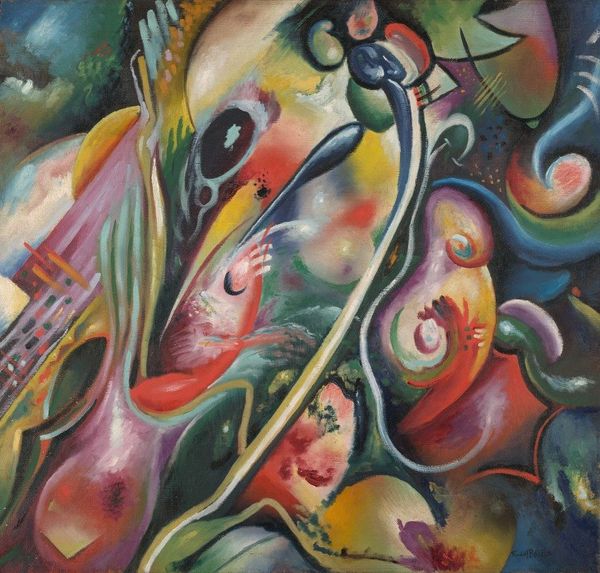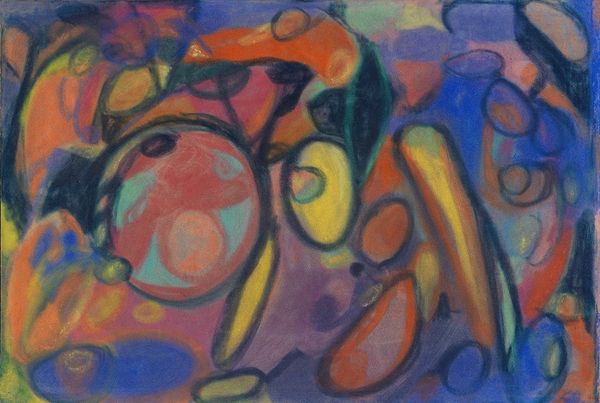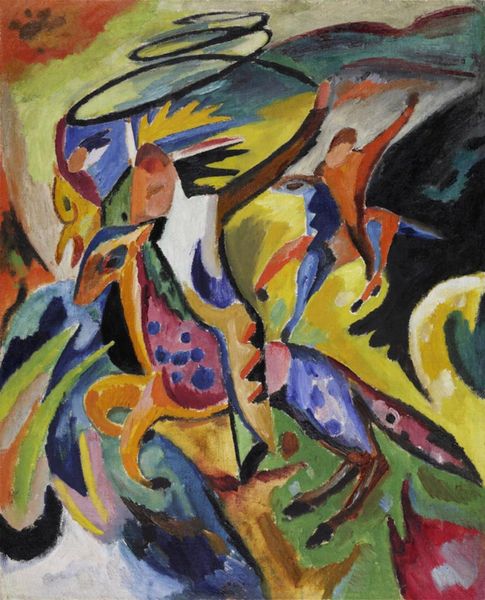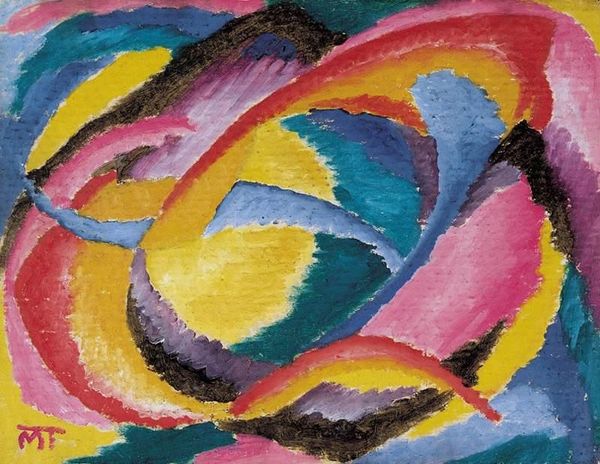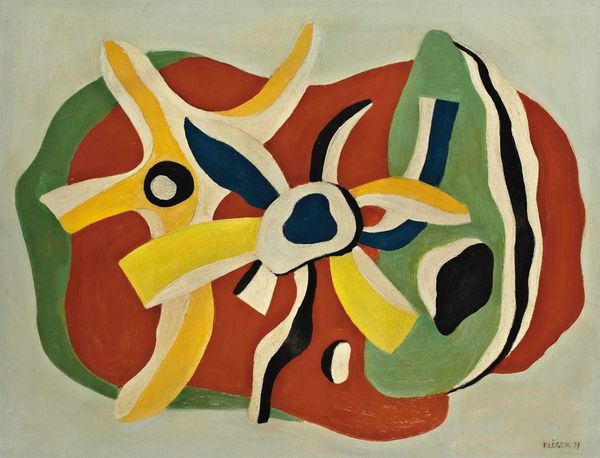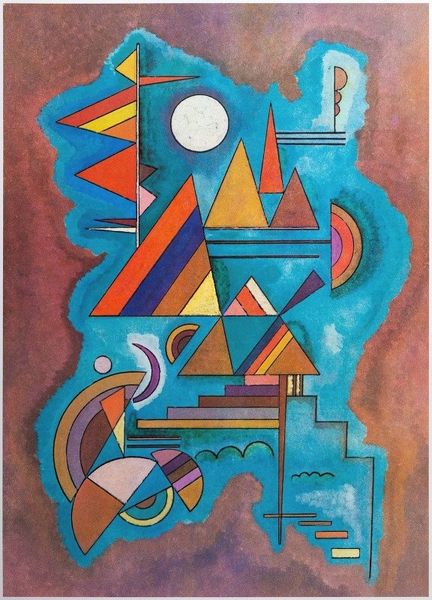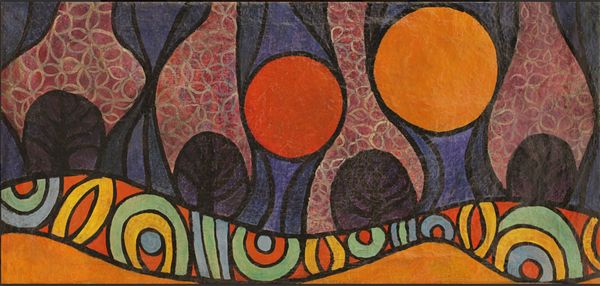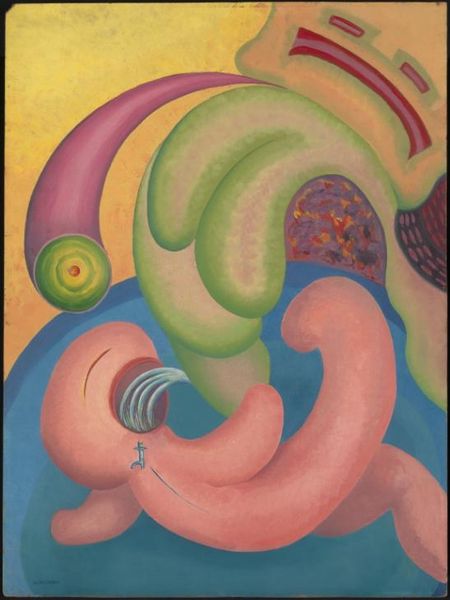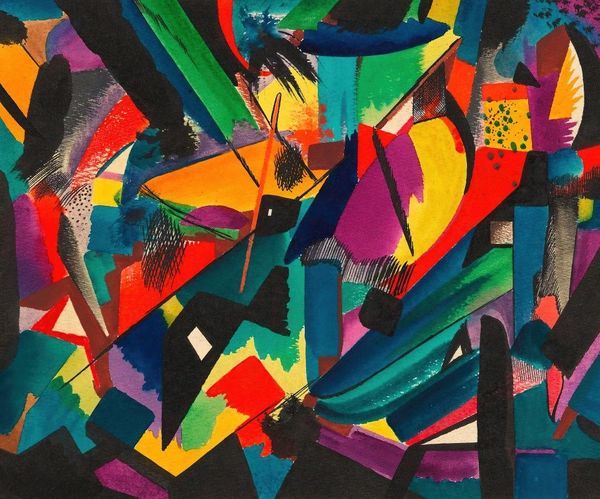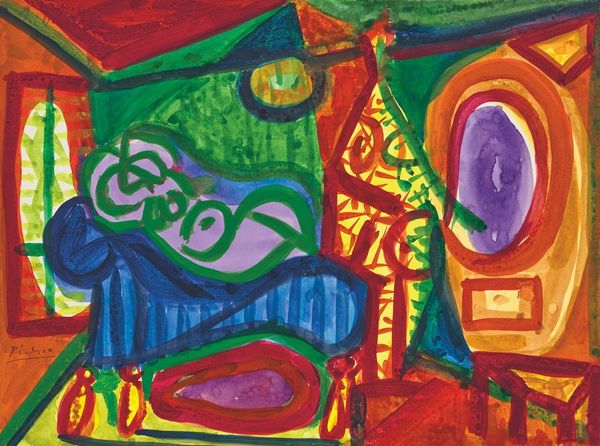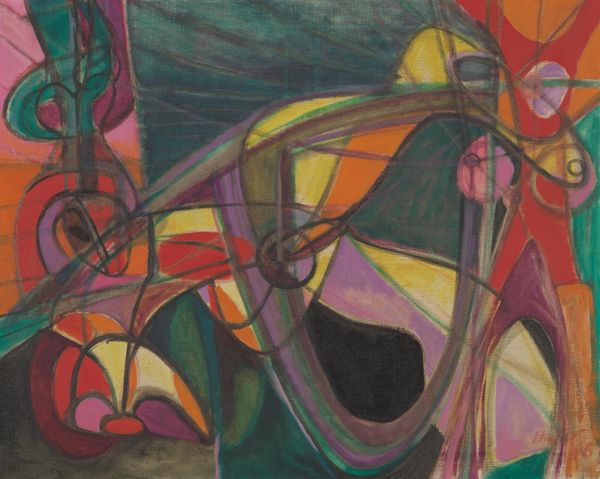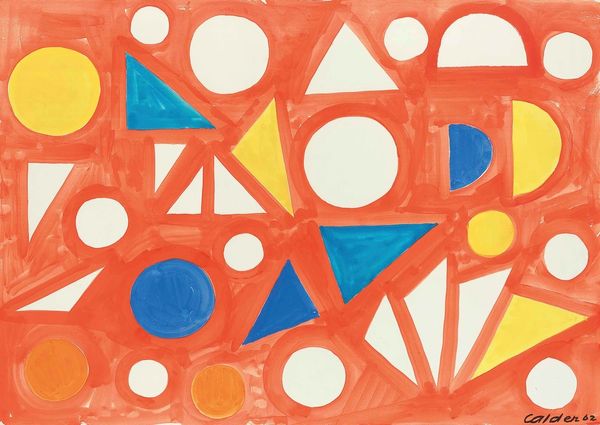
Copyright: Public Domain: Artvee
Editor: So, this is "Fieber," created around 1928 by Karl Wiener. It looks like it’s an acrylic painting. It's a very vibrant piece! What strikes me is its energetic composition and the interesting use of overlapping geometric forms. What do you see in this work, especially from a materialist perspective? Curator: This work’s materials and production immediately bring to mind the societal contexts shaping abstract art in the early 20th century. Acrylic paint, while not as prevalent then as oils, represented a shift toward industrial production within the art world. The bright colors point towards advances in chemical dyes accessible through industrial manufacturing. Think about the labor involved. Was this paint commercially produced, allowing Wiener to focus solely on application, or did he engage in some aspects of material creation himself? Editor: That's a great question! It's interesting to consider how much control the artist had over the materials. It gives me a different perspective when analyzing abstract art like this. Does the medium constrain the expression, or facilitate it? Curator: Precisely! Moreover, the use of geometric shapes – circles, lines, and intersecting planes - connects this painting to broader societal themes. Were these commercially produced stencils? I wonder about the rise of standardization in industrial design during the same period. "Fieber" thus mirrors the machine age; is it possible it reflects anxieties regarding mass production, even while potentially benefitting from it? The very act of painting, of manual application, could be seen as a subtle form of resistance against full industrialization. Editor: I see! It really contextualizes the artwork. So we're examining it not just as a creative expression, but as a material object deeply connected to production methods and cultural attitudes of the time. Thanks! Curator: Exactly! By examining the 'how' and 'what' of its creation, we reveal 'why' it might exist in its particular form. A look at the supply chain provides a new lens.
Comments
No comments
Be the first to comment and join the conversation on the ultimate creative platform.
